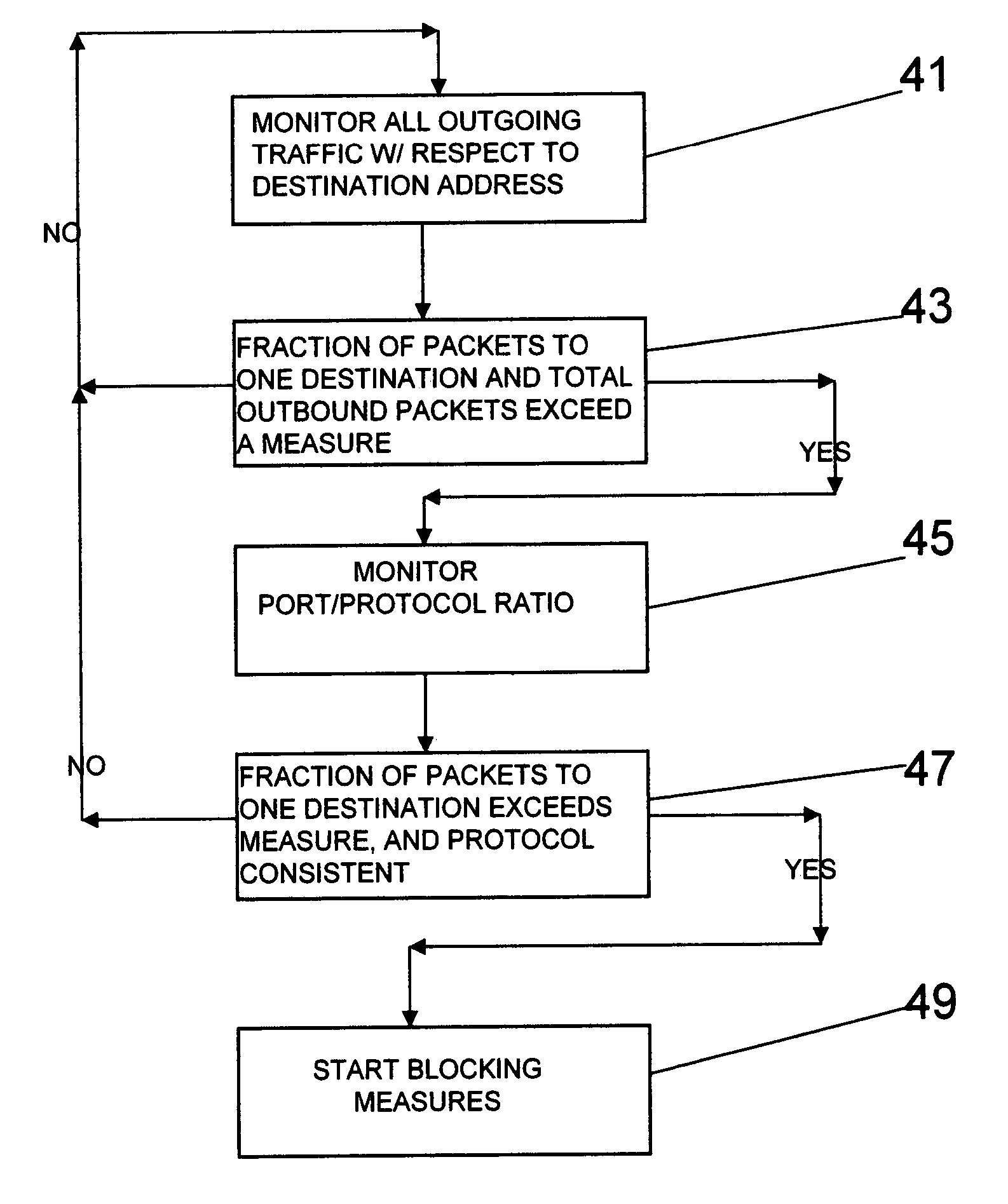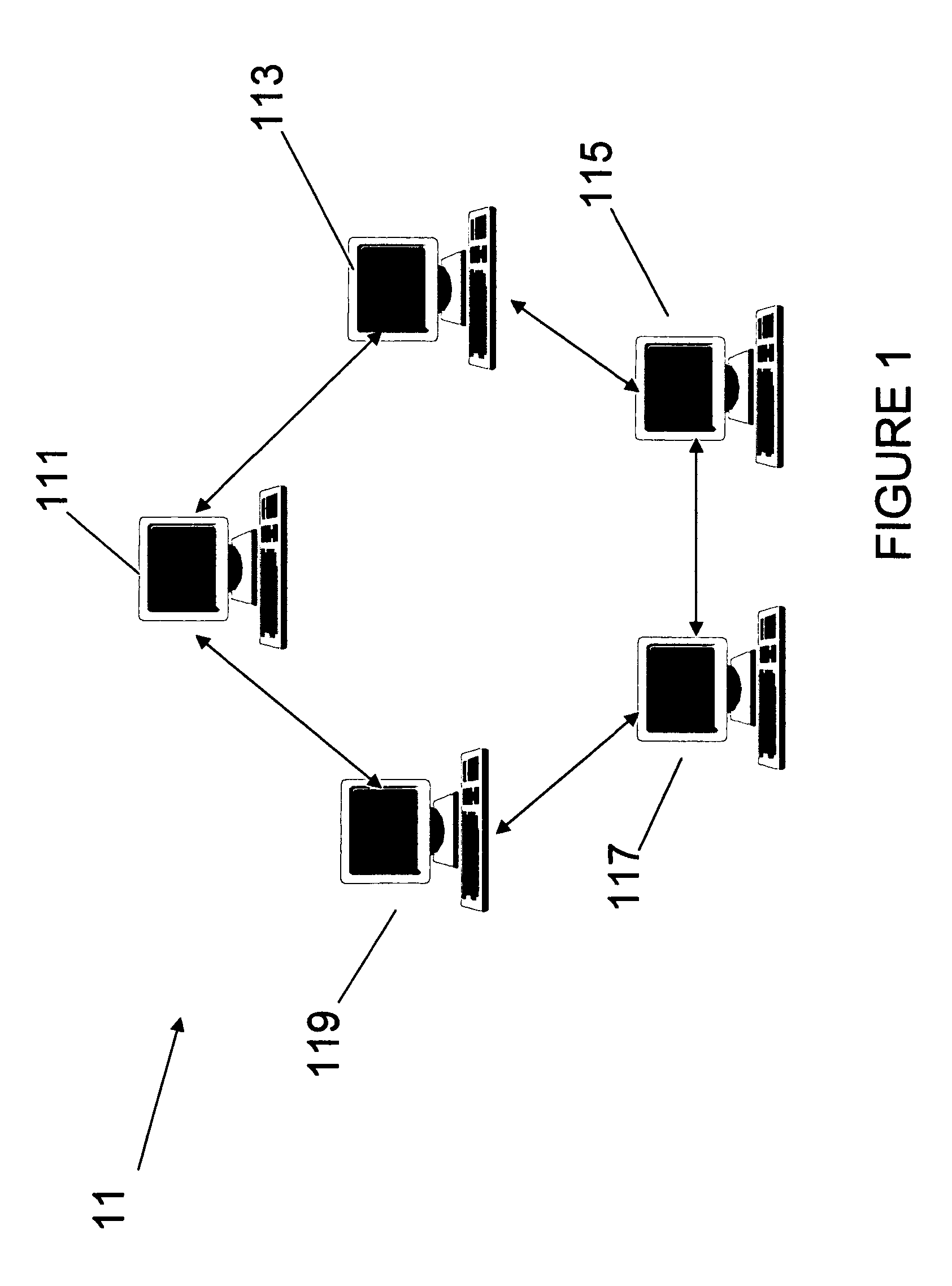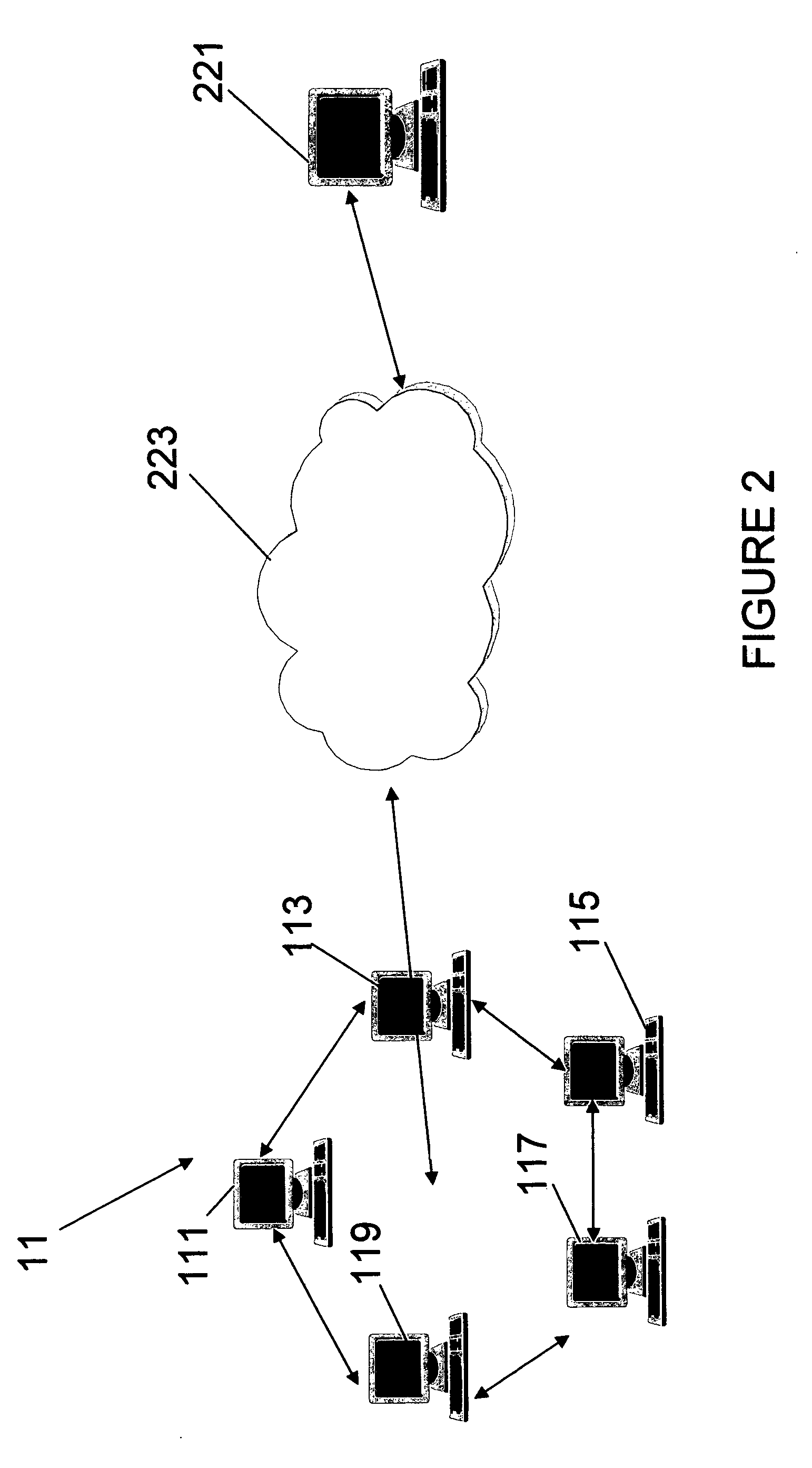Detection of grid participation in a DDoS attack
a technology of ddos and detection of grid participation, applied in the direction of instruments, unauthorized memory use protection, sustainable buildings, etc., can solve the problems of economic viability of a particular grid computing implementation, entities that don't institute security measures run the risk of attack, and loss of service is the inability of a particular network service, such as e-mail, order entry, transaction processing, or database management, to be availabl
- Summary
- Abstract
- Description
- Claims
- Application Information
AI Technical Summary
Benefits of technology
Problems solved by technology
Method used
Image
Examples
Embodiment Construction
[0047]It is an object of the invention to provide a method, system, and apparatus to detect outbound attack traffic from an infected grid to facilitate identification, reaction, and remediation, and limit the participation of the grid in a subsequent DDoS attack. DDoS detection is accomplished by statistical analysis of incoming and outgoing streams.
[0048]The invention provides a method of, system for, and product for managing a denial of service attack in a multiprocessor environment, that is, a grid environment. This is accomplished by detection of statistical characteristics and statistical anomalies, through statistical analysis of incoming and outgoing streams. The first step is establishing normal traffic usage baselines in the multiprocessor environment. Once the baseline is established the next step is monitoring outgoing traffic to detect a high proportion of packets being sent to a specific destination address (potentially an ultimate target or victim), and a high number o...
PUM
 Login to View More
Login to View More Abstract
Description
Claims
Application Information
 Login to View More
Login to View More - R&D
- Intellectual Property
- Life Sciences
- Materials
- Tech Scout
- Unparalleled Data Quality
- Higher Quality Content
- 60% Fewer Hallucinations
Browse by: Latest US Patents, China's latest patents, Technical Efficacy Thesaurus, Application Domain, Technology Topic, Popular Technical Reports.
© 2025 PatSnap. All rights reserved.Legal|Privacy policy|Modern Slavery Act Transparency Statement|Sitemap|About US| Contact US: help@patsnap.com



